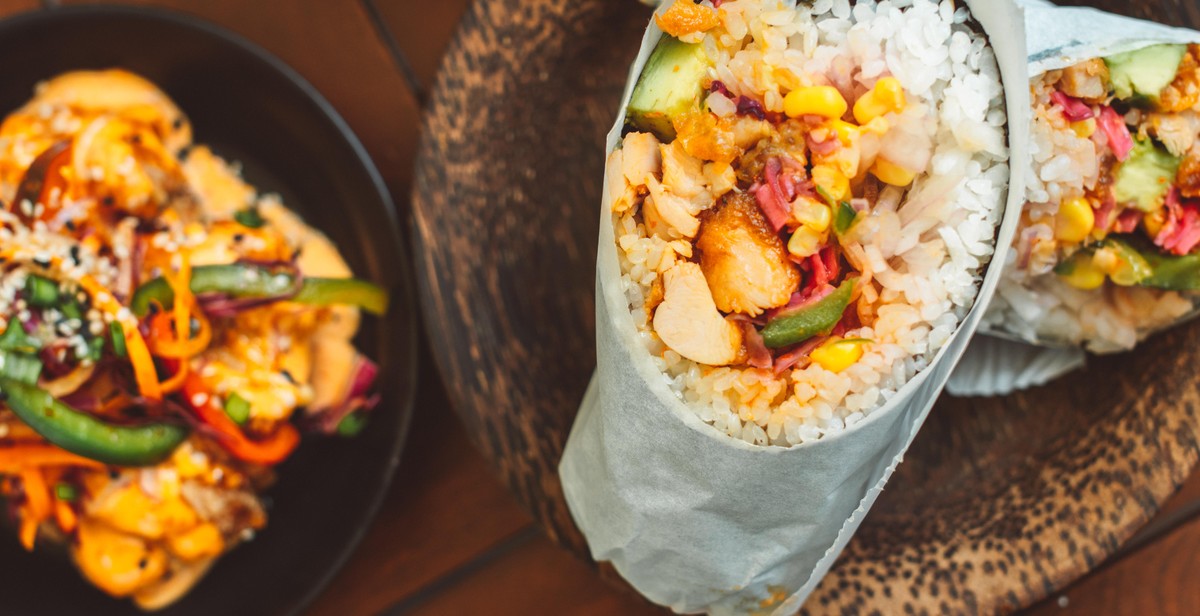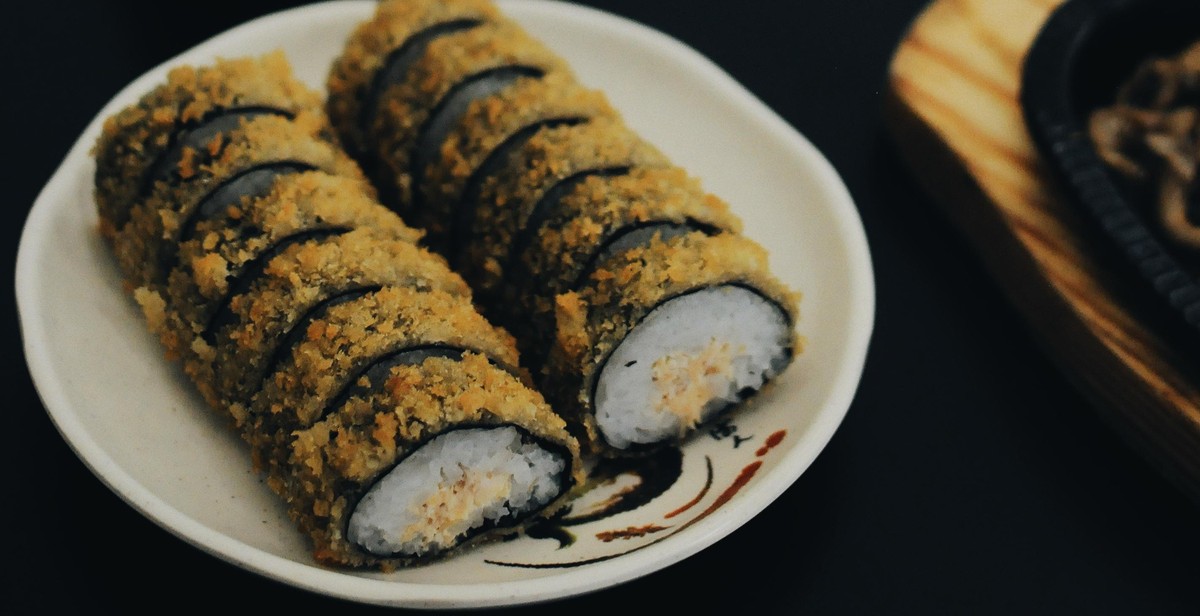How to Cook Sushi Rice without a Rice Cooker: Stovetop Method for Homemade Sushi
Sushi is a delicious Japanese dish that has gained popularity all over the world. It is made with sushi rice, which is a special type of short-grain rice that is sticky and slightly sweet. While a rice cooker is the most convenient way to cook sushi rice, not everyone has one. Fortunately, you can still make perfect sushi rice on the stovetop with a few simple steps.
In this article, we will guide you through the stovetop method of cooking sushi rice without a rice cooker. We will provide you with a step-by-step guide on how to prepare the rice, how to cook it, and how to season it properly. We will also give you tips on how to make your sushi rice taste even better.
Whether you are a beginner or an experienced cook, this article will help you make perfect sushi rice every time. So, grab your ingredients, and let’s get started!
What is Sushi Rice?
Sushi rice, also known as shari, is a short-grain Japanese rice that is used to make sushi. It has a sticky texture and a slightly sweet taste, making it perfect for rolling into sushi rolls or shaping into nigiri sushi.
The main characteristic of sushi rice is its stickiness, which allows it to hold its shape when rolled or shaped. This is due to the high starch content of the rice, which is essential for creating the perfect sushi texture.
Types of Sushi Rice
There are several types of sushi rice available, but the most commonly used is koshihikari. This variety is grown in Japan and is known for its high quality and excellent flavor.
Other types of sushi rice include:
- Calrose
- Nishiki
- Botan
- Hitomebore
Each type of sushi rice has its own unique flavor and texture, so it’s worth experimenting to find your favorite.
How to Prepare Sushi Rice
Before cooking sushi rice, it’s important to rinse it thoroughly to remove any excess starch. This will prevent the rice from becoming too sticky and clumpy.
Once rinsed, the rice is typically cooked in a rice cooker or on the stovetop. The traditional stovetop method involves soaking the rice for 30 minutes before cooking it in a pot with a tight-fitting lid.
Conclusion
Sushi rice is an essential ingredient in Japanese cuisine and is the key to making delicious homemade sushi. With its sticky texture and sweet flavor, it’s no wonder that sushi rice has become a popular choice for sushi lovers around the world.
Ingredients
For the Sushi Rice:
1 cup sushi rice
1¼ cups water
For the Sushi Vinegar:
- 2 tablespoons rice vinegar
- 1 tablespoon sugar
- 1 teaspoon salt
Optional: Kombu (dried seaweed) and sake (Japanese rice wine)
Instructions:
| Step | Description |
|---|---|
| 1 | Rinse the sushi rice in cold water until the water runs clear. |
| 2 | Place the rice and water in a medium-sized pot and let it soak for 30 minutes. |
| 3 | Bring the rice and water to a boil over medium-high heat. Once boiling, reduce the heat to low and cover the pot with a tight-fitting lid. Cook for 15-20 minutes or until the water is absorbed and the rice is tender. |
| 4 | Remove the pot from the heat and let it sit, covered, for an additional 10 minutes. |
| 5 | While the rice is cooking, prepare the sushi vinegar by combining the rice vinegar, sugar, and salt in a small saucepan over medium heat. Cook until the sugar dissolves, stirring occasionally. |
| 6 | Once the rice is done, transfer it to a large mixing bowl and add the sushi vinegar. Mix well, making sure the vinegar is evenly distributed throughout the rice. |
| 7 | Allow the rice to cool to room temperature before using it to make sushi. |
Optional: If you have kombu and sake, add a small piece of kombu to the rice and water mixture before cooking and replace ¼ cup of water with sake for added flavor.
Now that you know how to cook sushi rice without a rice cooker using the stovetop method, you can easily make your own homemade sushi at home. Enjoy!

Cooking Sushi Rice on the Stovetop
Sushi rice can be easily cooked on the stovetop without a rice cooker. Follow these simple steps for perfect sushi rice every time:
Step 1: Rinse the Rice
Measure out the desired amount of rice and rinse it in a fine mesh strainer under cold running water. Swirl the rice around with your hand to remove any excess starch. Repeat the process until the water runs clear.
Step 2: Soak the Rice
Place the rinsed rice in a pot and add water in a ratio of 1:1.1 (one part rice to 1.1 parts water). Let the rice soak in the water for 30 minutes.
Step 3: Cook the Rice
Place the pot on the stove and bring the water to a boil over high heat. Once boiling, reduce the heat to low and cover the pot with a tight-fitting lid. Cook for 10-12 minutes or until all the water has been absorbed.
Step 4: Let the Rice Rest
Remove the pot from the heat and let it sit covered for 10-15 minutes. This allows the rice to steam and become tender.
Step 5: Add the Sushi Vinegar
In a small saucepan, heat the sushi vinegar, sugar, and salt until the sugar and salt have dissolved. Once dissolved, pour the mixture over the cooked rice and gently fold it in using a wooden spoon or rice paddle. Be careful not to mash the rice.
Now your sushi rice is ready to be used for homemade sushi rolls or other Japanese dishes.

Tips for Cooking Sushi Rice without a Rice Cooker
Cooking sushi rice without a rice cooker may seem daunting, but with the right technique and tools, it can be done easily. Here are some tips to help you cook perfect sushi rice on the stovetop:
Tip 1: Use the Right Type of Rice
When it comes to sushi rice, it’s important to use the right type of rice. Look for short-grain rice that is specifically labeled as sushi rice or Japanese rice. These types of rice are stickier and have a higher starch content, which makes them perfect for sushi.
Tip 2: Rinse the Rice Thoroughly
Before cooking, it’s important to rinse the rice thoroughly to remove excess starch and any debris. Place the rice in a fine-mesh strainer and rinse under cold water until the water runs clear.
Tip 3: Soak the Rice for at Least 30 Minutes
Soaking the rice before cooking helps to soften the grains and ensure even cooking. Place the rinsed rice in a bowl and cover with cold water. Let it soak for at least 30 minutes, or up to an hour.
Tip 4: Use the Right Amount of Water
The ratio of rice to water is important when cooking sushi rice. For every cup of rice, use 1 ¼ cups of water. Measure the water carefully and add it to the pot with the rice.
Tip 5: Cook the Rice over Low Heat
When cooking sushi rice, it’s important to use low heat to prevent the rice from burning or sticking to the bottom of the pot. Bring the rice and water to a boil over high heat, then reduce the heat to low and cover the pot with a tight-fitting lid. Cook for 18-20 minutes, or until all the water has been absorbed.
Tip 6: Let the Rice Rest Before Adding the Sushi Vinegar
After the rice is cooked, remove the pot from the heat and let it sit for 10-15 minutes. This allows the rice to rest and absorb any remaining moisture. Once the rice has rested, add the sushi vinegar and gently fold it into the rice using a wooden spoon or paddle.
Conclusion
Cooking sushi rice without a rice cooker may seem daunting, but with the stovetop method, it is entirely achievable. By following the steps outlined in this article, you can create perfectly cooked sushi rice every time. Remember to use high-quality rice and measure the ingredients precisely to achieve the best results.
It is essential to use the right type of rice, such as short-grain Japanese rice, to ensure that the rice is sticky enough to hold together in sushi rolls. Additionally, rinsing the rice before cooking removes excess starch and ensures that the rice is fluffy and not clumpy.
Using a rice paddle to fluff the rice and a wooden bowl to cool it down helps to maintain the rice’s texture and flavor. Once the rice is ready, you can use it to make a variety of sushi dishes, from classic rolls to creative combinations.
Overall, cooking sushi rice without a rice cooker is an excellent skill to have for any sushi lover. With a little patience and practice, you can master this technique and enjoy homemade sushi whenever you want.
| Pros | Cons |
|
Overall, the stovetop method for cooking sushi rice is an excellent alternative to using a rice cooker. With a little bit of practice, you can master this technique and enjoy delicious homemade sushi whenever you want.
